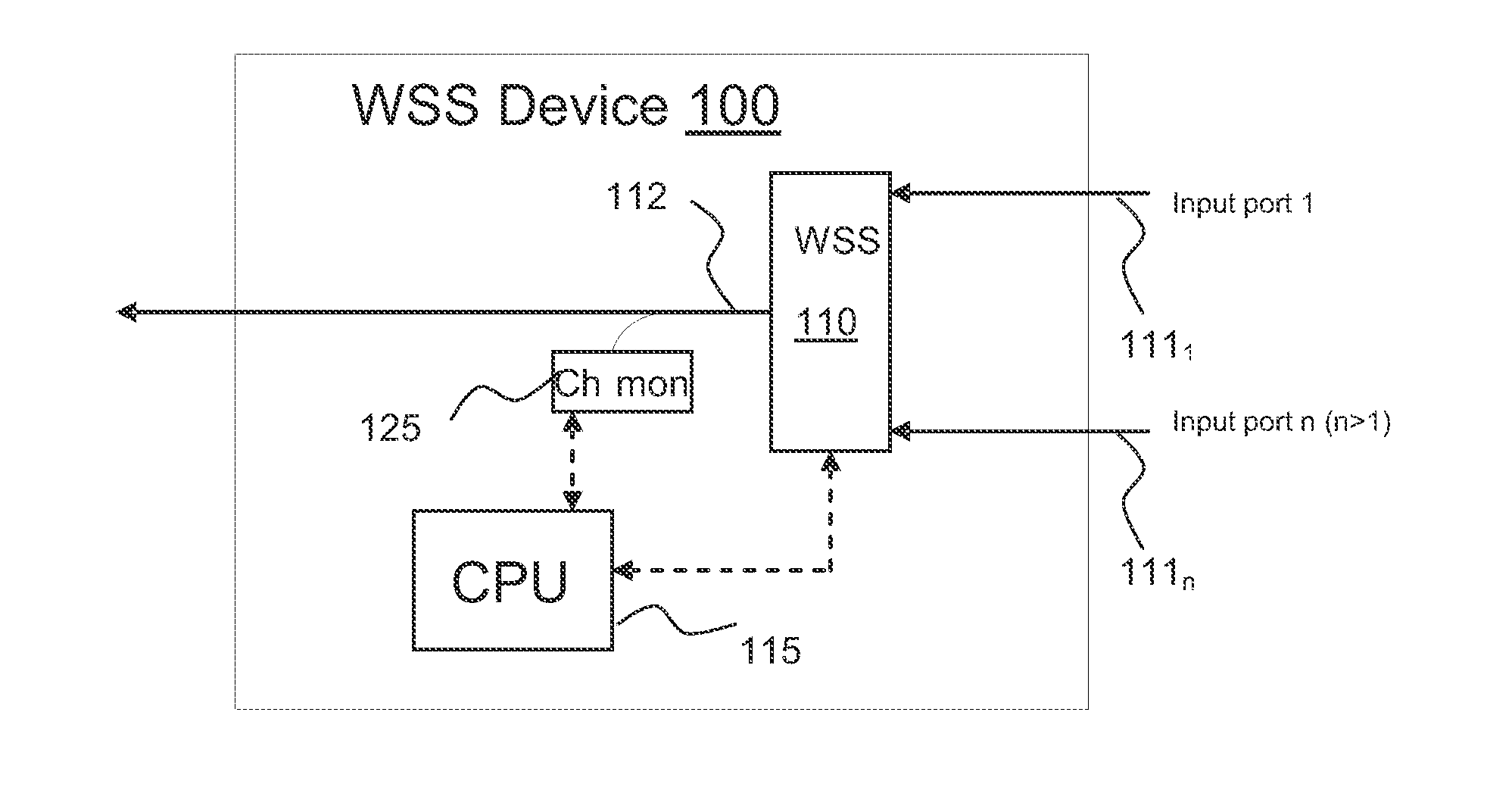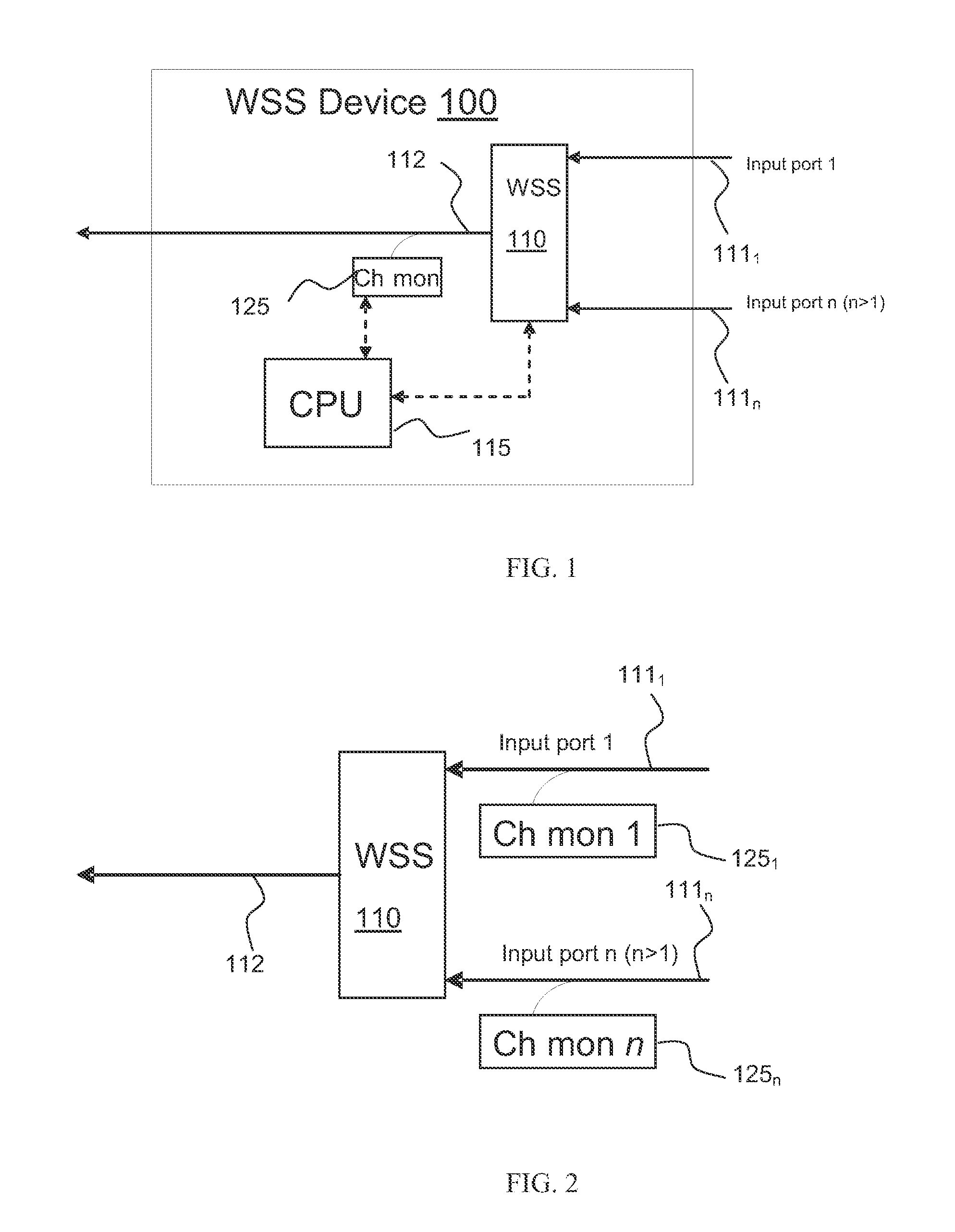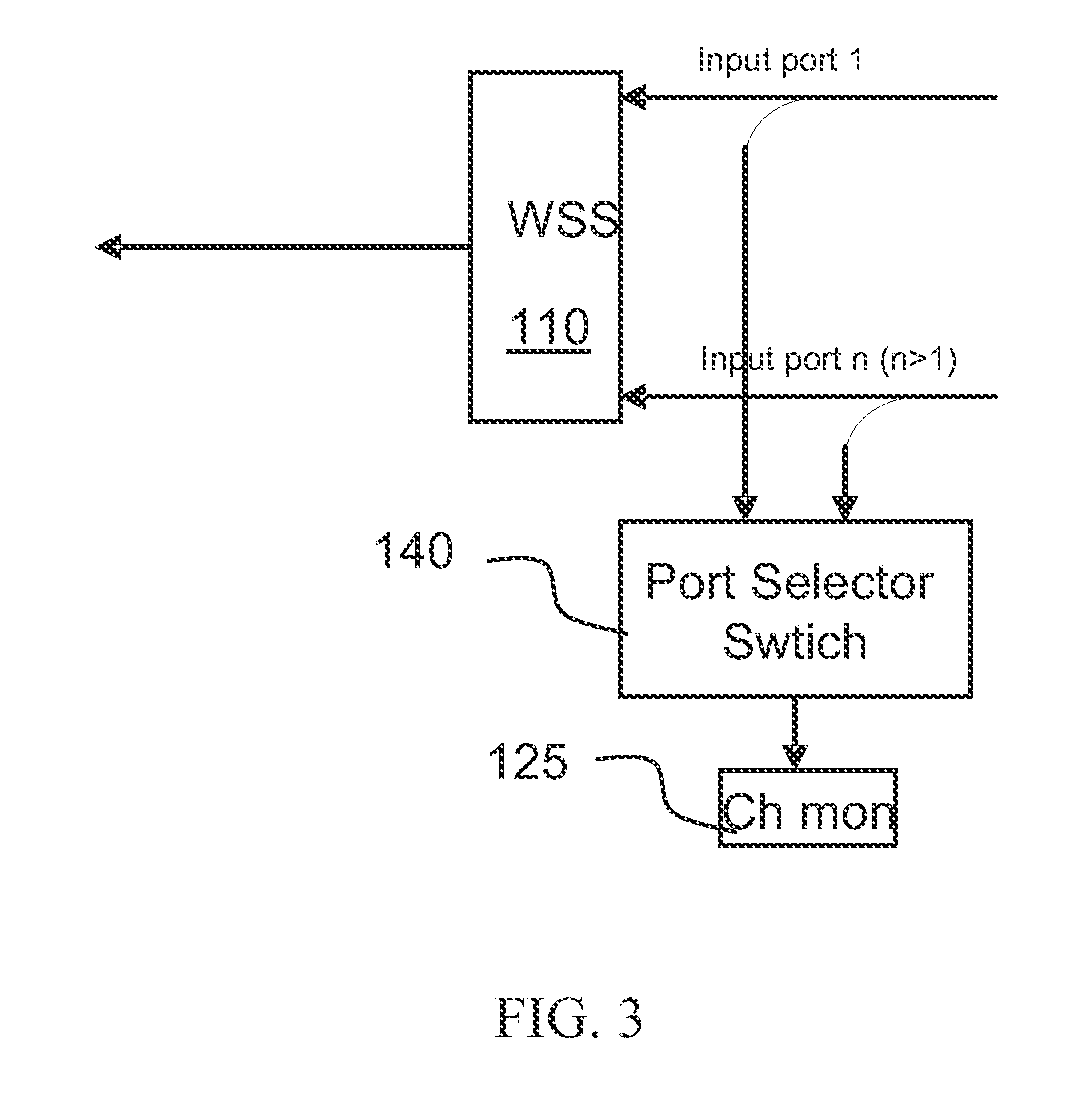Method for auto-configuration of a wavelength selective switch in an optical network
a wavelength selective switch and optical network technology, applied in multiplex communication, multiplex system selection arrangements, electrical devices, etc., can solve the problems of increasing the cost and complexity of this network level control, and the small and simpler networks involving wss/roadm technology often don't warrant the increase in cost and complexity. , to achieve the effect of increasing priority
- Summary
- Abstract
- Description
- Claims
- Application Information
AI Technical Summary
Benefits of technology
Problems solved by technology
Method used
Image
Examples
Embodiment Construction
[0025]One aspect of the current invention provides a means by which a controlled WSS device can automatically configure itself based on the detection of wavelengths, i.e. wavelength-multiplexed optical channels, present at one or more inputs into the device. In the following description, the operation of a WSS device will be considered in the context of a WDM optical network which supports a plurality of wavelength-multiplexed optical channels, which central wavelengths λi, i=1, . . . , N, are typically spaced uniformly in frequency and lie on a pre-defined grid, for example corresponding to 50 GHz, 100 GHz or 200 GHz frequency spacing. However, it will be appreciated that the uniform in frequency spacing of the supported wavelengths channels is not a requirement for the present invention. In the context of this specification, we will be referring to the supported wavelength channels simply as the wavelengths, according to the channel central wavelengths λi, so that the presence of ...
PUM
 Login to View More
Login to View More Abstract
Description
Claims
Application Information
 Login to View More
Login to View More - R&D
- Intellectual Property
- Life Sciences
- Materials
- Tech Scout
- Unparalleled Data Quality
- Higher Quality Content
- 60% Fewer Hallucinations
Browse by: Latest US Patents, China's latest patents, Technical Efficacy Thesaurus, Application Domain, Technology Topic, Popular Technical Reports.
© 2025 PatSnap. All rights reserved.Legal|Privacy policy|Modern Slavery Act Transparency Statement|Sitemap|About US| Contact US: help@patsnap.com



